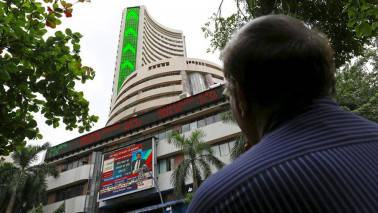The 2019 Union Budget is just around the corner. While finance minister Arun Jaitley is in the US reportedly receiving treatment, there is speculation in the media that Piyush Goyal might present this year’s budget.
Harish Puppala | Rakesh Sharma
Moneycontrol Contributors
The 2019 Union Budget is just around the corner. While finance minister Arun Jaitley is in the US reportedly receiving treatment, there is speculation in the media that Piyush Goyal might present this year’s budget.
Here’s hoping Mr Jaitley makes a full recovery and returns to his work. In the meanwhile, as a build up to the budget, let’s take a look at how Arun Jaitley has tended to treat Indian businesses in his annual budgets.
Demonetisation and GST will always cast a shadow over any discussion regarding the Modi government’s approach towards finance and business. The general consensus seems to be that the twin blows were a setback for businesses. While demonetisation had a lot of support on the ground from the general public, one could safely argue that reactions towards GST range from dislike to indifference. Shoddy execution, and too much too soon, seem to be fairly common grouses with GST. And Arun Jaitley has taken a fair bit of heat for the missteps. While he went to town claiming GST was a monumental reform, even the World Bank, which is generally polite and upbeat in all its reports about India, said last year, “The tax rates in the Indian GST system are among the highest in the world. The highest GST rate in India, while only applying to a subset of goods and services traded, is 28 %, which is the second highest among a sample of 115 countries which have a GST (VAT) system and for which data is available.”
Arun Jaitley has been paying attention, and, to his credit, he did say that the GST council has discussed trimming the GST’s standard rate down to just one slab - taking the middle path between the 12% and 18% slabs and bringing it to 15%. In his recent blog post titled ‘18 Months of GST’, Jaitley wrote, “A future road map could well be to work towards a single standard rate instead of two standard rates of 12% and 18%. It could be a rate at some midpoint between the two.” The dreaded 28% slab, which is among the most unpopular things about the GST, has been culled down to just ‘luxury and sin’ goods. The government also moved the cement sector from the 28% slab to 18% recently, rectifying what many saw as a bad move to begin with. That rate drop could cost the government 13,000 crores in revenue annually. One Livemint analysis claimed “...with 2019 Lok Sabha elections approaching, the government is keen that any tax revenue forgone for the benefit of the consumer reaches the intended beneficiary.” Jaitley also wrote, “The country should eventually have a GST which will have only slabs of zero, 5% and standard rate with luxury and sin goods as an exception…(it will) take some reasonable time when the tax will rise significantly.”
So that’s the finance minister on his big ticket reform.
Jaitley’s many budgets
The Economic Times noted that, back in 2014, in his very first budget as the finance minister, Arun Jaitley had proposed raising the foreign direct investment limit in insurance and defence manufacturing from 26% to 49%. He said FDI would be routed through the Foreign Investment Promotion Board, or FIPB. Livemint provides a good backgrounder to the 2014 budget: “The Indian economy grew to almost $2 trillion in size, but, by the end of the (UPA’s) 10-year period, was plagued by high inflation (brought about largely by the lack of capacity across areas) and high interest rates. Worse still, a spate of corruption scandals involving its ministers forced the UPA into a shell.”
Remember the final year of the UPA’s second term? - the corruption allegations, the emergence of Arvind Kejriwal, and numerous reports that government officers were refusing to look at files because they feared being tainted as corrupt. (Fun fact: The same Kejriwal is now allying with the Congress party now to fight Narendra Modi. Gotta love Indian politics.)But, aside from the high brow political drama that AAP brings to the table, most worryingly for the Indian economy, in the words of BloombergQuint, “...the central government’s fiscal deficit was just short of 5%. The Congress party-led United Progressive Alliance government had chosen to support the economy with fiscal stimulus after the global financial crisis but failed to withdraw the stimulus in time. By 2009-10, the fiscal deficit had hit 6.5% of the GDP. The process to bring the deficit back under control began the year after and Jaitley remained committed to it.”
In FY18, the deficit was at 3.5 percent
In the union budget of 2015-16, Arun Jaitley promised a phased reduction of corporate tax rate from 30% to 25% over the next four years. As ET noted in its review, while such a change did happen, it did not happen for every private business. Jaitley’s second budget included an important concept - PoEM, or the place of effective management. It was used to rationalise the criteria for tax residency of companies and was considered an important anti tax-avoidance measure. The new concept claimed that if a company’s place of effective management was India, its global income would be taxable in India as it would be treated as an Indian resident. The FM also announced that the centre would bring a comprehensive bankruptcy code in the next fiscal. That code, the IBC or Insolvency and Bankruptcy Code 2016, was later enacted and became, in the words of ET, “the most effective instrument against bad loans.” That year also saw the announcement of another big measure - a refinance agency to provide much-needed credit facilities to micro, small and medium enterprises, with a focus on businesses promoted by SC and ST entrepreneurs. It’s name was the Micro Units Development Refinance Agency, or MUDRA Bank. Jaitley announced a corpus of Rs 20,000 crore and a credit guarantee corpus of Rs 3,000 crore. To help improve the ease of doing business in India, the minister introduced the composite cap (FDI + FPI) to simplify calculation of foreign investment limit in sectors where FDI cap was applicable.
2016-17 was an important year for the government. The finance minister reduced the corporate tax rate to 29% (plus, of course, applicable surcharge and education cess) for domestic companies whose total turnover/gross receipts did not exceed Rs 5 crore. Also, option to avail of reduced tax rate of 25% was made available to manufacturing companies set up after 1 March 2016 if the companies were not claiming any profit or investment-linked deductions. Jaitley also eased the FDI norms in FY17. He proposed significant liberalisation of FDI norms in a host of sectors including insurance, pension, asset reconstruction companies (or ARCs as they would become popular in 2018) and stock exchange. He announced that foreign investment would be allowed through automatic route for up to 49% subject to the guidelines on Indian management and control in the insurance and pension sectors. Earlier, foreign investment up to 26% was allowed through automatic route. Similarly, 100% FDI in ARCs was permitted through automatic route which was earlier allowed only up to 49%.
To manage aggressive tax planning by foreign MNCs, Jaitley introduced new documentation norms for base erosion and profit shifting . He proposed the introduction of three-layered transfer pricing documentation that required taxpayers to prepare a master file, local file and country by country reporting. This BEPS framework meant that multinationals had to disclose profits, number of employees and taxes paid in every country of operation. Jiatley also introduced a 6% tax on ad revenues of MNCs being paid from India. He called it equalisation levy. Here’s how it worked, and bear with me as we dive into some circuitous officialese - it was levied on the the amount of consideration for specified services received or receivable by a non-resident not having a permanent establishment in India, from a resident in India who carries out business or profession, or from a nonresident having a permanent establishment in India. In simpler terms, Jaitley had finally found a way to to indirectly tax digital advertising by companies such as Google and Facebook.
Overall though, as Gopal Srinivasan, chairman of TVS Capital Funds, and vice-chairman of Indian Venture Capital Association, noted in his review, “Jaitley has been frugal with his attention to industry, to investors and to stock markets; focusses on agriculture, rural development, social welfare and infrastructure.” One Moneycontrol analysis summed up the 2016 budget thus: “...he disappointed big businesses who expected to see FM snip corporate tax rate.”
The next budget, for 2017-18, saw the FM further reduce corporate tax rates to 25% for domestic companies having total turnover/ gross receipts in the previous year not exceeding Rs 50 crore. He proposed a significant reform by announcing the abolition of the Foreign Investment Promotion Board. That set the stage for more reforms in FDI policy. FIPB was a part of Qthe finance ministry’s Department of Economic Affairs. Its job was to process FDI proposals and make recommendations for government approval. Moody’s Investors Service approved of the 2017-18 union budget. Its report said, “We view the (budget) speech as consistent with the government’s commitment to gradual fiscal consolidation and balanced growth, a credit positive for the sovereign ratings.” Anil Padmanabhan, then executive editor of Mint, explained in his analysis, “...most don’t realise, but the movement in indirect tax rates and slabs inevitably generate the news and hype about budgets; which is probably why most people came away feeling underwhelmed. In that sense this year’s budget, sans tax rate changes, was sanitized to begin with. It focused on spending and listing out the government’s priorities within the fiscal sector: social sector with a particular accent on the poorest of the poor, farmers, rural sector and roads.”
In last year’s union budget, Arun Jaitley, in keeping with the trend of reducing corporate tax rate, reduced the rate for companies with turnover of upto Rs 250 crore. The previous tax cuts were for medium and small enterprises, and had left out big companies. The finance minister said the tax cut would benefit 99% of the firms which filed taxes. In financial year 2015-16, the government had announced a similar cut for companies with an annual turnover of up to Rs 50 crore, which benefited 96% of companies that filed their taxes. Then there was the issue of LTCG. The reintroduction of the long-term capital gains tax on equity disappointed investors, which was reflected in a sharp correction in the benchmark indices after the announcement, but the markets recovered later in the day’s trade. A Livemint analysis agreed with the move, saying, “...given the way LTCG is treated in most parts of the world, and the given income profile of people making those gains, a moderate tax is justified.”
As he closed his budget speech in 2018, Arun Jaitley said the government was guided by its mission to “strengthen agriculture, rural development, health, education, employment, MSME and infrastructure sectors of the Indian economy.” He even quoted Swami Vivekananda:
You merge yourselves in the void and disappear, and let new India arise in your place. Let her arise – out of the peasants’ cottage, grasping the plough; out of the huts of the fisherman. Let her spring from the grocer’s shop, from beside the oven of the fritter-seller. Let her emanate from the factory, from marts, and from markets. Let her emerge from groves and forests, from hills and mountains
Big talk from the finance minister there. Former PM Manmohan Singh was apparently unimpressed. He was quoted by a Congress party leader as saying, “The government says farmers’ income will be doubled by 2022. But it’s not possible until the agricultural growth is 12%. Until we achieve that … It is just a hollow assurance.”
The Economic Times noted that businesses, both small and big, were affected by demonetisation and the teething issues during the early days of GST. However, said the newspaper, “(Finance Minister Arun) Jaitley did provide some relief to the micro, small and medium enterprises in his budgets...big businesses kept waiting for significant corporate tax cuts. His budgets were marked by important reforms and several steps aimed at increasing ease of doing business.”















